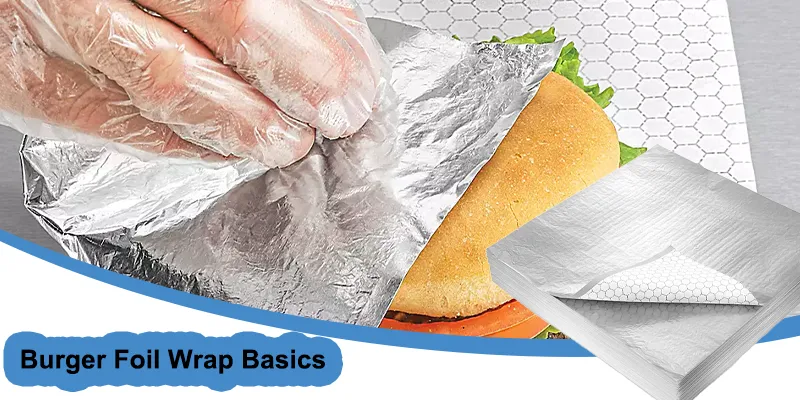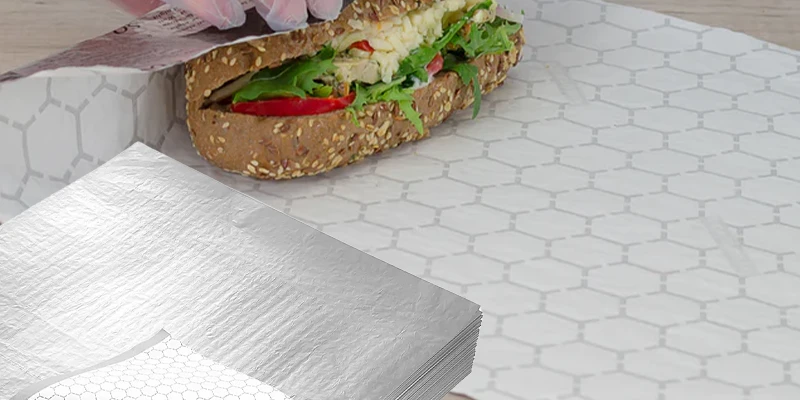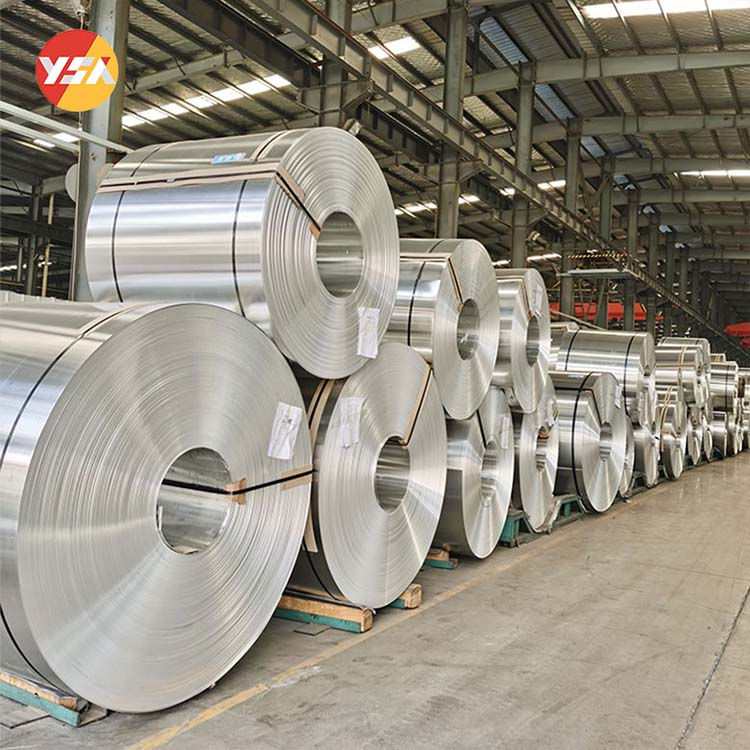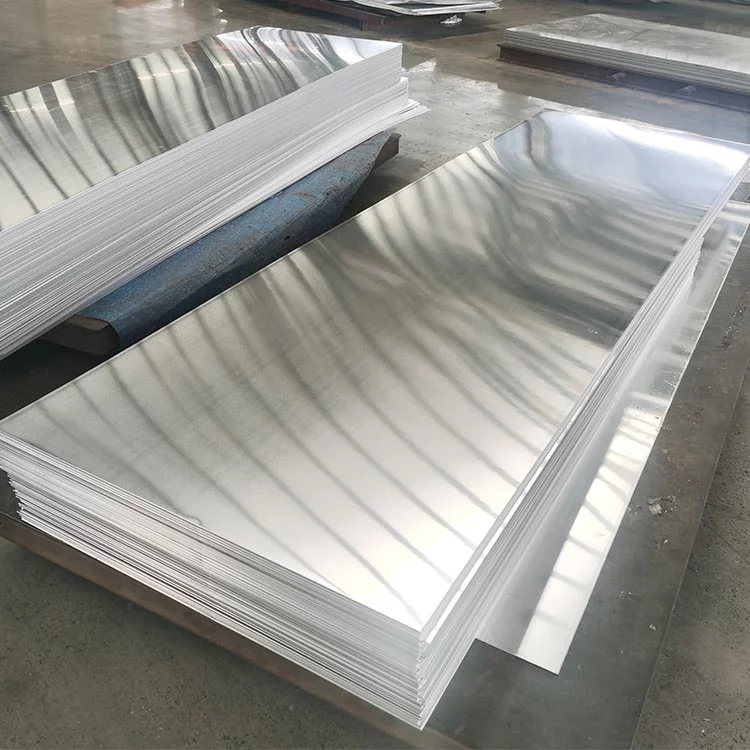
What Is Burger Foil Wrap?
Burger foil wrap , is also called paper laminated aluminum hexagon burger foil. It is specialized wrapping burgers, combined with paper and aluminum foil. Burger foil is square-sized; one side is paper with hexagon patterns, and another is aluminum foil. Let’s break down its components and features:
- Aluminum Foil: a barrier to moisture, air, and odors, helping to keep food fresh.
- Paper: absorbing more water and moisture, adds flexibility and durability, make your burgers wrapping stronger.
- Hexagon Structure: mainly for heat dissipation, keep moisture out of your burger crust.
Burger foil wrap usually pre-cut to square sheets for fitting burgers and sandwiches.
Why Use Burger Foil Sheets Lined Paper Honeycomb?
- Heat Retention: Aluminum foil reflects up to 97% of radiant heat, maintaining burger temperature at 60–65°C for 30–50 minutes (tested under ambient conditions). Outperforms wax-coated paper and plain cardboard.
- Cold Insulation: Suitable for chilled burgers or frozen foods, preventing condensation during transport.
- Compressive Strength: Honeycomb structure provides 5–10 MPa compressive strength, resisting deformation under stacking or handling. Protects burgers from crushing, even with toppings like lettuce or crispy bacon.
- Tear Resistance: The foil layer enhances puncture resistance, reducing risks of grease leaks.
- Biodegradability: FSC-certified or uncoated honeycomb paper decomposes in 2–6 months under industrial composting conditions (ASTM D6400 standard).
- Grease and Moisture Resistance: Aluminum foil blocks oil penetration, maintaining wrapper integrity. It prevents sogginess in buns caused by steam or sauces.
How To Wrap Burger In Pre-cut Burger Foil?

Step 1: Prepare Your Burger
- Ensure your burger is cooked and assembled with all desired toppings.
- Let it rest for 1-2 minutes to avoid excess steam softening the bun.
Step 2: Choose the Right Burger Foil
- Use pre-cut, grease-resistant burger foil.
- Aluminum foil is ideal for heat retention and crispness.
Step 3: Position the Burger
- Place the burger in the center of the foil.
- For a better hold, slightly fold the sides of the foil upward before wrapping.
Step 4: Wrap Tightly and Securely
- Bottom Fold: Bring the bottom edge of the foil up and over the burger.
- Side Folds: Fold the left and right edges inward, overlapping slightly.
- Top Fold: Tuck the top edge down to seal the package.
How to Choose the Right Burger Foil Wrap?
Selecting the right burger foil sheets could save cost. Below is a structured guide:
Determine the Size
- Measure your burger’s diameter and height (e.g., standard 4″ diameter, 2.5″ height).
- Choose sheets that provide 2–3 inches of margin on all sides for proper folding.
- Common Sizes:
- Sliders: 8″ x 8″ sheets.
- Standard Burgers: 12″ x 12″ sheets.
- Large/Gourmet Burgers: 14″ x 14″ or custom sizes.
Assess Material Quality
- Aluminum Foil:
- Thickness: Opt for 15–30 μm foil for durability and heat retention.
- Food Safety: Ensure FDA 21 CFR 175.300 compliance for direct food contact.
- Honeycomb Paper:
- Density: 80–120 g/m² for crush resistance.
- Certifications: FSC-certified or 100% recycled paper for sustainability.
Rendimiento térmico
- Heat Retention: Look for products that retain heat for 30–50 minutes.
- Confirm suppliers provide thermal test data (e.g., ASTM C518).
- Insulation: Honeycomb structure should trap air pockets to slow heat loss.
Compare Costs
- Standard sheets: 0.08–0.08–0.15 per sheet.
- Premium eco-friendly sheets: 0.15–0.15–0.25 per sheet.
- Negotiate discounts for orders over 10,000 units.
Verify Supplier Reliability
- Certifications: ISO 9001 (quality management) and ISO 14001 (environmental management).
- Samples: Test samples for tear resistance, grease barrier, and heat retention.
- Lead Times: Ensure suppliers can meet deadlines (e.g., 2–4 weeks for standard orders).


